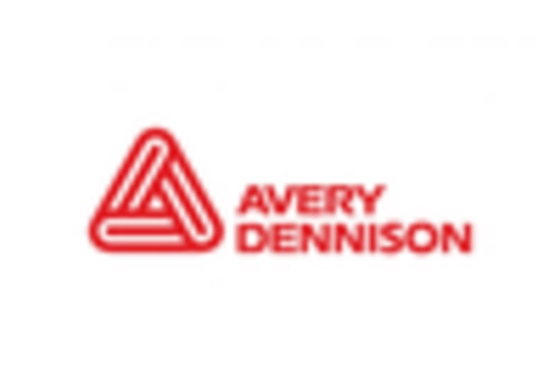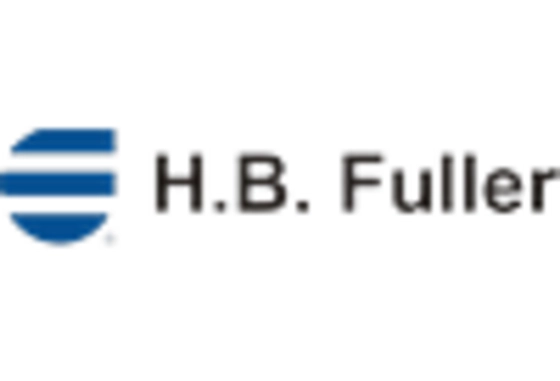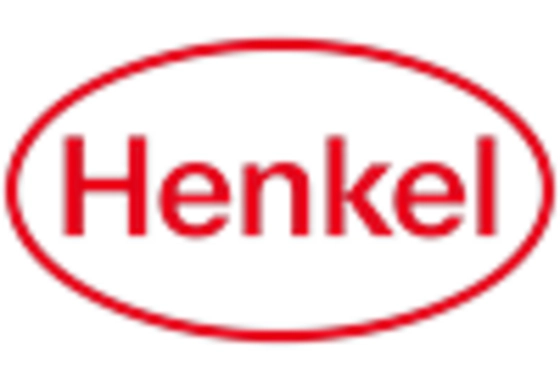Customization Trends in Bookbinding
Customization is emerging as a significant trend within the Bookbinding Adhesive Market. As consumers increasingly seek personalized products, the demand for bespoke bookbinding solutions is on the rise. This trend is particularly evident in the production of limited edition books, artisanal publications, and custom journals, where unique binding techniques and adhesives are essential. In 2025, the market for customized bookbinding solutions is anticipated to grow by 4%, reflecting the shift towards individualized consumer preferences. Manufacturers are responding by offering a wider range of adhesive options that cater to specific binding requirements, such as flexibility, durability, and aesthetic qualities. This focus on customization not only enhances the consumer experience but also drives innovation within the Bookbinding Adhesive Market, as companies strive to meet the diverse needs of their clientele.
Rising Demand for Eco-Friendly Products
The Bookbinding Adhesive Market is experiencing a notable shift towards eco-friendly products. As consumers become increasingly aware of environmental issues, there is a growing preference for adhesives that are non-toxic and biodegradable. This trend is reflected in the rising sales of water-based adhesives, which are perceived as safer alternatives to traditional solvent-based options. In 2023, the market for eco-friendly adhesives was valued at approximately 1.5 billion USD, indicating a robust growth trajectory. Manufacturers are responding to this demand by innovating and reformulating their products to meet sustainability standards. This shift not only caters to consumer preferences but also aligns with regulatory pressures aimed at reducing harmful emissions. Consequently, the emphasis on sustainability is likely to drive growth in the Bookbinding Adhesive Market, as companies strive to enhance their product offerings and appeal to environmentally conscious consumers.
Increased Investment in Educational Materials
The Bookbinding Adhesive Market is benefiting from increased investment in educational materials across various regions. Governments and educational institutions are recognizing the importance of quality educational resources, leading to a surge in the production of textbooks and learning materials. In 2025, the global market for educational publishing is projected to reach 10 billion USD, which is likely to drive demand for reliable bookbinding adhesives. As educational materials require durability and longevity, the need for high-performance adhesives becomes paramount. This trend is further supported by the rise of hybrid learning models, which necessitate the production of both physical and digital resources. Consequently, the Bookbinding Adhesive Market is expected to experience growth as manufacturers align their product offerings with the evolving demands of the educational sector.
Growth of the Publishing and Printing Industries
The Bookbinding Adhesive Market is closely linked to the performance of the publishing and printing sectors. As these industries expand, the demand for high-quality bookbinding adhesives is expected to rise correspondingly. In recent years, The Bookbinding Adhesive Market has shown resilience, with a compound annual growth rate (CAGR) of approximately 3.5% projected through 2025. This growth is driven by increasing literacy rates and the proliferation of digital content, which has led to a resurgence in printed materials. Consequently, the need for reliable and durable adhesives in bookbinding applications is becoming more pronounced. Publishers are seeking adhesives that not only provide strong bonds but also enhance the aesthetic appeal of their products. As a result, the Bookbinding Adhesive Market is poised for growth, driven by the evolving needs of the publishing and printing sectors.
Technological Innovations in Adhesive Formulation
Technological advancements are playing a pivotal role in shaping the Bookbinding Adhesive Market. Innovations in adhesive formulation, such as the development of high-performance polymers and advanced curing techniques, are enhancing the efficiency and effectiveness of bookbinding adhesives. For instance, the introduction of hot melt adhesives has revolutionized the binding process, offering faster application times and improved adhesion properties. In 2024, the market for advanced adhesive technologies is projected to reach 2 billion USD, underscoring the impact of these innovations. Furthermore, the integration of smart technologies, such as temperature-sensitive adhesives, is expected to gain traction, providing additional functionality. As manufacturers continue to invest in research and development, the Bookbinding Adhesive Market is likely to witness a surge in product offerings that cater to diverse binding needs, thereby driving market growth.


















Leave a Comment